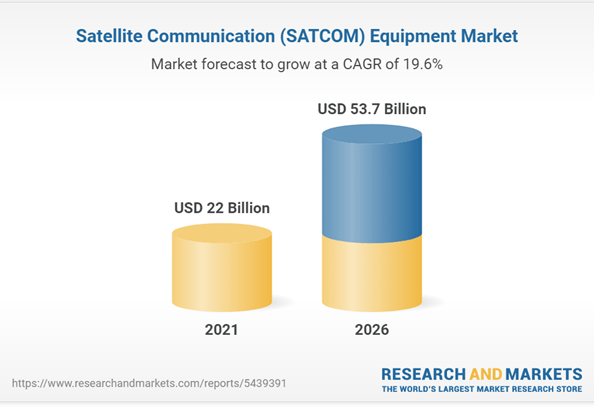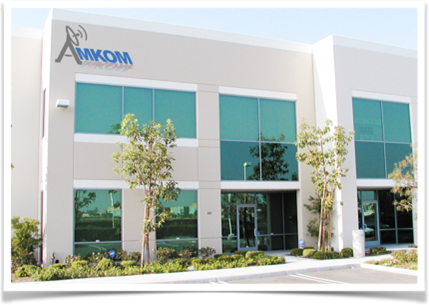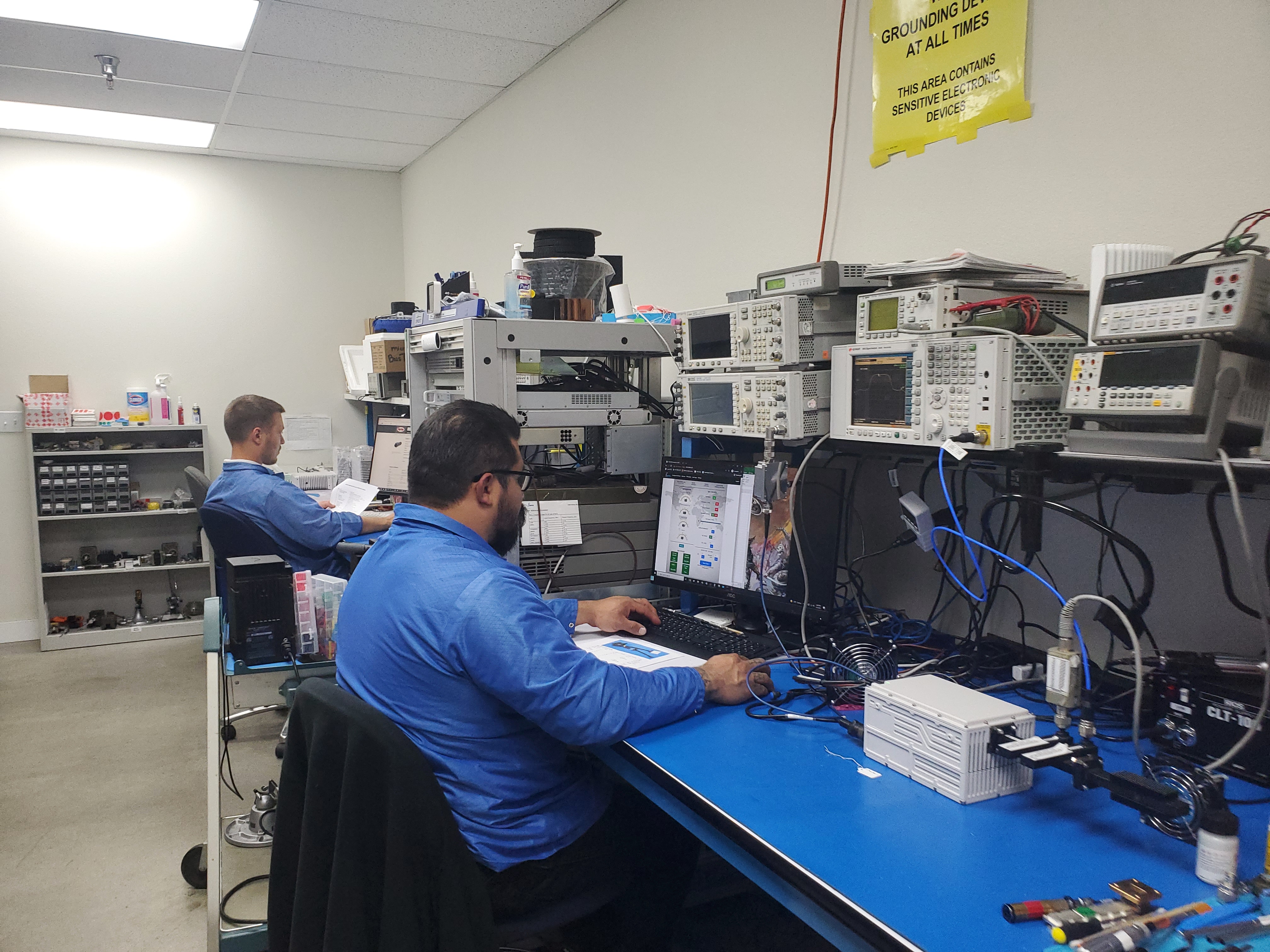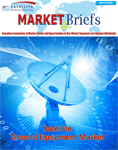The Satellite ground equipment market is projected to grow from US$ 22 billion in 2021 to US$ 53.7 Billion by 2026, at a Compounded Annual Growth Rate (CAGR) of 19.6% according to Research and Markets. Satellite equipment is an integral part of the communication in the commercial and defense industries.
The deployment of low earth orbit (LEO) satellites and constellations of satellites for communications applications has increased their demand across the globe. Other factors driving the market growth include growing demand for Ku- and Ka-band satellites, and the growing fleet of autonomous and connected vehicles used for various applications in the military and commercial sectors, which require customized Satcom-on-the-move (SOTM)antennas according to the report.
Based on platform, the airborne Satcom segment is estimated to lead the SOTM from 2021 to 2026 and is projected to grow further due to the increasing need for high-definition intelligence, surveillance, and reconnaissance (ISR) videos, and an increasing number of connected commercial aircraft, rising adoption of UAVs and rising number of private aviation companies worldwide supporting market growth.
increasing need for high-definition intelligence, surveillance, and reconnaissance (ISR) videos, and an increasing number of connected commercial aircraft, rising adoption of UAVs and rising number of private aviation companies worldwide supporting market growth.
Based on verticals, the commercial segment is expected to lead the SOTM market. This is due to increasing need for uninterrupted mobile broadband coverage in remote and far-flung regions, streaming information and entertainment, extensive use of small satellites for commercialization and data transferability, technological advancements in transport and logistics network, and increasing demand for broadband connections and VSAT connectivity.
Driving the growth for satellite ground equipment in the next few years according to the report include the following:
Increasing investments in High Throughput Satellites (HTS). An HTS is a satellite that provides high throughput compared with a fixed satellite system for the same amount of allocated frequency on orbit. HTS reuses the frequency and multiple spot beams to increase throughput and reduce the cost per bit delivered. HTS is primarily deployed to provide broadband Internet access service to unserved regions. The majority of HTS satellites are designed primarily for the enterprise, telecom, or maritime sectors. Space and satellite system providers are launching HTS satellites for high-speed communication services. The increasing HTS launches increase the adoption of ground station equipment as well as the replacement of ground station equipment, thereby driving the market.
Emergence of mobile ground stations. The ground station is designed to track, communicate, and process the data received from the satellites. However, constructing a ground station requires high upfront investments. This has resulted in the adoption of small and portable mobile ground stations that involve less upfront cost. The mobile ground station allows the researchers in space and others to have easy access to satellite signals in the absence of a traditional ground station. The emergence of the mobile ground station will increase the adoption of satellite ground equipment according to Research and Markets.
Components of Satellite Ground Equipment
Satellite ground equipment consists of earth station components including the antennas, block upconverters (BUC), low noise block (LNBs), multiplexers and other uplink and downlink components. One of the key components are BUCs which are used in the transmission of a band of frequencies from a lower frequency to a higher frequency. Modern BUCs convert from the L band to Ku band, C band and Ka band. Older BUCs convert from a 70 MHz intermediate frequency (IF) to Ku band or C band. BUCs are integrated into satellite earth stations and terminals that are used for various applications such as VSAT networks, maritime, In-Flight Connectivity, Satcom on the Move and military applications, among others.
Key Players
  |
| Amkom Design Group’s product are designed, assembled and vigorously tested at their California facility according to their rigorous ATP (Acceptance Testing Procedure). |
There are many BUC manufacturers in the market today which include ACORDE, Comtech, CPI, Mission Microwave, Revgo Global, Terrasat, to name a few. It’s one of the most competitive segments of the satellite ground equipment market.
One of the newest entrants to the BUC manufacturing sector is Vista, California-based Amkom Design Group which was founded in 2016 by tech entrepreneur Ernest Kasparov. In a relatively short span of time the company has produced over 4,500 BUCs that are currently in the field operating in every possible environment around the globe on the ground, in the air, or at sea.
“We’ve spent several years designing the “Perfect BUC” after evaluating everyone else. We have achieved our goal, every unit’s weatherproof and robust Hyper-Light package is constructed with the most advanced mechanical, aerodynamic, and precision engineering in mind taking the MTBF to the next level of at least 15 years during normal operation. Vibration friendly implementation which equals to microphonic-less operation can withstand high winds, bumps on the road, or impact while still transmitting a stable, clean, microphonic-free signal within its specified temperature range up to +70C,” said Amkom’s Founder and CEO Ernest Kasparov.
“Amkom Design Group quickly grew due to our extensive engineering and design capabilities of RF amplifiers and BUCs featuring advanced functionalities with concentrations on compact form factor, complex filtering, extreme efficiency, and stable operation. Since our operations began, the reliable RF amplifier designs have been known to survive harsh environmental conditions such as high-shock or vibration, and extreme temperatures,” said Kasparov.
Amkom’s product lines include among others the Extended (13.75 – 14.5GHz) frequency and Low (12.75 – 13.25 GHz) Ku-Band BUCs. They are also launching BUCs in the Ka-band shortly. A new product that they will be highlighting at the Satellite show in Washington, D.C. is its advanced compact and reliable 16W to 125W Redundancy System Kit. The kit provides 1:1 redundancy in a compact size.
 |
| To read or download a pdf of a MarketBrief report on the Ground Equipment Market sponsored by Amkom Design Group click here. |
The company also specializes in making customized products for clients with no minimum orders required. “We consider every order very important. We will take on custom orders for as low as one unit as long as it’s in our area of expertise,” said Henry Belkin, Amkom's Sales Director.
Amkom’s ability to develop customized solutions garnered interest from large systems integrators who initially ordered just one unit which led to large orders from such key players such Kymeta, Cobham, Ovzon, Indra, among others.
Jake Talbot, Kymeta’s Senior Director of Supply Chain said ”Amkom supplies the BUC for our Kymeta u8 terminals, and the relationship since inception is one of collaboration and partnership. Amkom really stood above the others with their technical capability, unit economics and commercial agility. The strong sense of “win-win” for the relationship really differentiates them.”
When Cobham needed a BUC that could operate at 70oC for its radome-covered antennas, they turned to Amkom who were able to provide test data that their 16W Ku-Band BUC can operate at that temperature. “That was a big deal for us as most BUC providers can only certify up to 60oC,” said Wes Schenk, Technical Service Sales Manager of Cobham’s SeaTel products. “Another thing that they were able to do for us was to customize the software so we can select local oscillators. Their form factor was important but also their flexibility in providing special features. They are agile--some companies are not so willing to go beyond their standard portfolio--they were willing to work with us and they were flexible,” added Schenk.
“It was a good fit for us. Our motto is ‘if you want something unique, we’ll built for you’ and Amkom’s flexibility and agility help us meet our specific customer requirements,” said Cobham’s Schenk.
Conclusion
With key vertical markets like the maritime, aeronautical and enterprise, among others, poised for recovery and growth post-pandemic, coupled with the coming online of thousands of non-Geostationary satellites the prospects for the satellite ground equipment market in the next few years are very promising indeed.
---------------------------------------------------
 Virgil Labrador is the Editor-in-Chief of Los Angeles, California-based Satellite Markets and Research which publishes a web portal on the satellite industry www.satellitemarkets.com, the monthly Satellite Executive Briefing magazine and occasional industry reports called MarketBriefs. Virgil is one of the few trade journalists who has a proven track record working in the commercial satellite industry. He worked as a senior executive for a teleport in Singapore, the Asia Broadcast Center, then-owned by the US broadcasting company CBS. He has co-authored two books on the history of satellite communications and satellite technology. He holds a Master’s in Communications Management from the University of Southern California (USC). He can be reached at virgil@satellitemarkets.com
Virgil Labrador is the Editor-in-Chief of Los Angeles, California-based Satellite Markets and Research which publishes a web portal on the satellite industry www.satellitemarkets.com, the monthly Satellite Executive Briefing magazine and occasional industry reports called MarketBriefs. Virgil is one of the few trade journalists who has a proven track record working in the commercial satellite industry. He worked as a senior executive for a teleport in Singapore, the Asia Broadcast Center, then-owned by the US broadcasting company CBS. He has co-authored two books on the history of satellite communications and satellite technology. He holds a Master’s in Communications Management from the University of Southern California (USC). He can be reached at virgil@satellitemarkets.com





